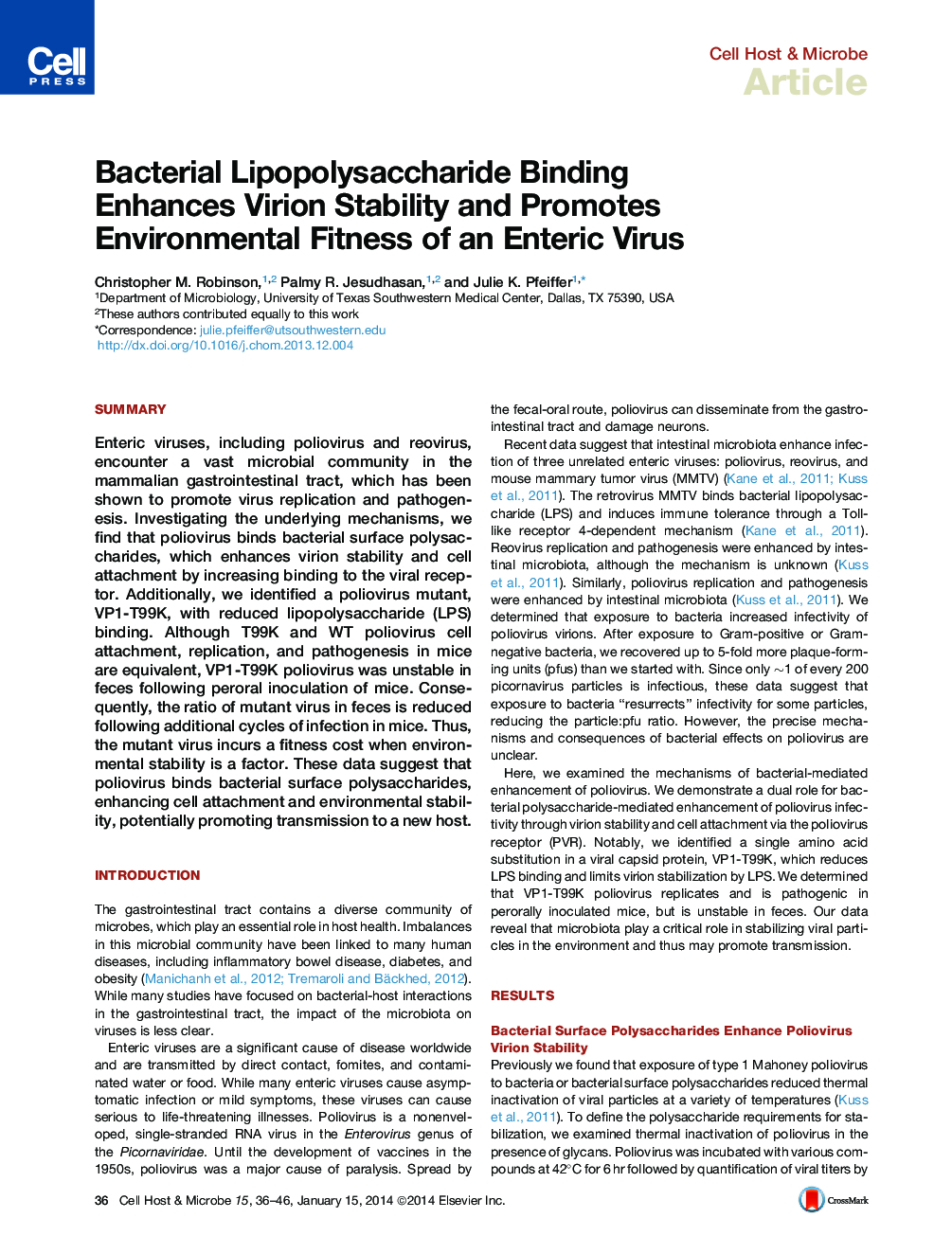| کد مقاله | کد نشریه | سال انتشار | مقاله انگلیسی | نسخه تمام متن |
|---|---|---|---|---|
| 4361120 | 1301353 | 2014 | 11 صفحه PDF | دانلود رایگان |
• Bacterial polysaccharides enhance poliovirus stability and cell attachment
• VP1-T99K mutant poliovirus has reduced lipopolysaccharide (LPS) binding
• Following peroral inoculation of mice, VP1-T99K poliovirus was unstable in feces
• Microbiota-mediated stabilization promotes poliovirus fitness in the environment
SummaryEnteric viruses, including poliovirus and reovirus, encounter a vast microbial community in the mammalian gastrointestinal tract, which has been shown to promote virus replication and pathogenesis. Investigating the underlying mechanisms, we find that poliovirus binds bacterial surface polysaccharides, which enhances virion stability and cell attachment by increasing binding to the viral receptor. Additionally, we identified a poliovirus mutant, VP1-T99K, with reduced lipopolysaccharide (LPS) binding. Although T99K and WT poliovirus cell attachment, replication, and pathogenesis in mice are equivalent, VP1-T99K poliovirus was unstable in feces following peroral inoculation of mice. Consequently, the ratio of mutant virus in feces is reduced following additional cycles of infection in mice. Thus, the mutant virus incurs a fitness cost when environmental stability is a factor. These data suggest that poliovirus binds bacterial surface polysaccharides, enhancing cell attachment and environmental stability, potentially promoting transmission to a new host.
Graphical AbstractFigure optionsDownload high-quality image (182 K)Download as PowerPoint slide
Journal: - Volume 15, Issue 1, 15 January 2014, Pages 36–46
